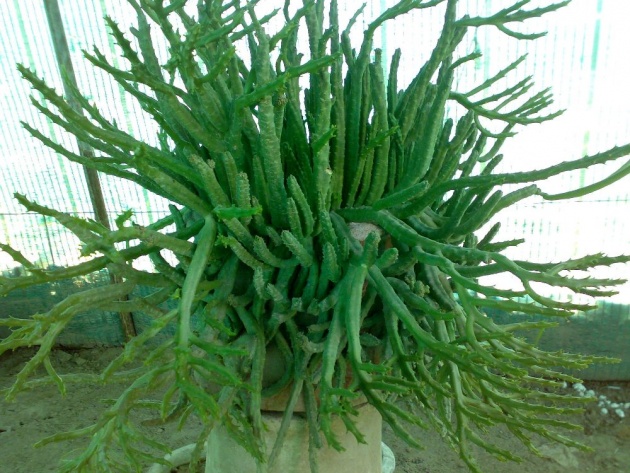Caralluma tuberculata is locally known as Pawaney/Pamenkey in Pashto, Chungan in Urdu and Bittercress in English. Bitter means an unpleasant taste and cress refers to pungent tasting leaves. It belongs to Genus Caralluma and Species tuberculata. Botanically it is known as Caralluma tuberculata and is placed in Asclepiadaceae family. It is widely distributed in Pakistan in almost all the four Provinces but the most common in Balochistan and secondly in KPK.
Basically, the Caralluma herb is an edible succulent plant. It has been utilized by the people for over a hundred years for many purposes, including the control of hunger and improved strength. However it has also been simply used in cooking, as Caralluma is a typical part of the diet.
Characteristics - Spiny leaves and thick flowers characterize the Caralluma plant. The flowers are star shaped and may be purple, red, black or yellow. They are typically shown during the summer or fall. The Caralluma stands with an angular stem and is clump forming. While the herb has been found extremely useful in many kinds of situations.
Caralluma as Vegetable - Hundreds upon hundreds of years, even before the Caralluma herb was known to the Western world, it has been utilized by the peoples as a vegetable. It has also been mixed with chutneys and pickles. It can be consumed both cooked and raw. The green follicles of the herb are often boiled, salted, and consumed.
As Medicine-Over the past centuries people have discovered certain properties that made the Caralluma herb more than just part of a vegetable diet. These properties were somehow able to suppress appetite naturally while enhancing energy levels and satiating thirst at the same time. Because of this, the Caralluma has become an extremely useful type of "portable food." It is even called a "famine food", since it helped fight off hunger in times of desperate need of food. Even back in history the Caralluma herb was already being used by tribesmen to treat health conditions such as diabetes. Caralluma is believed to block the activity of several enzymes, which then blocks the formation of fat, forcinf fat reserved to be burned.



